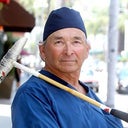While I know the healing process takes months, especially for open procedures such as mine, I would like to know if there is anything I can do to assist the healing. I had a 5 hour surgery, septorhinoplasty. I had a deviated septum, enlarged turbinate & dorsal hump fixed, as well as grafts to the tip. Should I still be sleeping upright 4 weeks post op? Will this help? Will reducing sodium help? Thank you in advance.
Answers (11)
From board-certified doctors and trusted medical professionals
Dr. Toby Mayer, MD

Dr. Toby Mayer, MD
Board Certified Facial Plastic Surgeon
Answer
Dr. Matthew Richardson, MD

Dr. Matthew Richardson, MD
Board Certified Facial Plastic Surgeon
Answer
Dr. Richard J. Bruneteau, MD

Dr. Richard J. Bruneteau, MD
Board Certified Plastic Surgeon
Answer
Dr. Jamil Asaria, MD

Dr. Jamil Asaria, MD
Certified Facial Plastic Surgeon
Answer
Dr. William Portuese, MD
Dr. William Portuese, MD
Board Certified Facial Plastic Surgeon
Answer
Dr. Andrew Pichler, MD
Dr. Andrew Pichler, MD
Board Certified Facial Plastic Surgeon
Answer
Dr. Steven Turkeltaub, MD
Dr. Steven Turkeltaub, MD
Board Certified Plastic Surgeon
Answer
Dr. Mario J. Imola, MD, DDS
Dr. Mario J. Imola, MD, DDS
Board Certified Facial Plastic Surgeon
Answer
Dr. Richard Ellenbogen, MD (retired)
Dr. Richard Ellenbogen, MD (retired)
Board Certified Plastic Surgeon
Answer
Dr. Richard W. Fleming, MD (retired)
Dr. Richard W. Fleming, MD (retired)
Board Certified Facial Plastic Surgeon
Answer
More Septoplasty Questions
See all Septoplasty Q&AWE SEND PRETTY
EMAILS
What’s trending? Who’s turning heads? Which TikTok myths need busting? We’ve got you. No fluff, no gatekeeping—just real talk. Get our free, unfiltered newsletter.
